
Cardross Golf Club
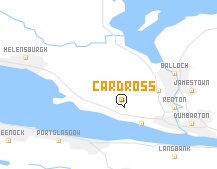
Cardross is a quiet and attractive village midway between Dumbarton and Helensburgh. The white painted golf clubhouse sits prominently on the main road as you pass through the village and has an interesting and welcoming appearance.
Appearances can often be deceptive but not in this case because the club staff and members are indeed very friendly and welcoming.
Robert Farrell has been the club professional for many years and his pleasant and relaxed manner puts everyone at ease whether booking a tee time or benefiting from his excellent teaching skills.
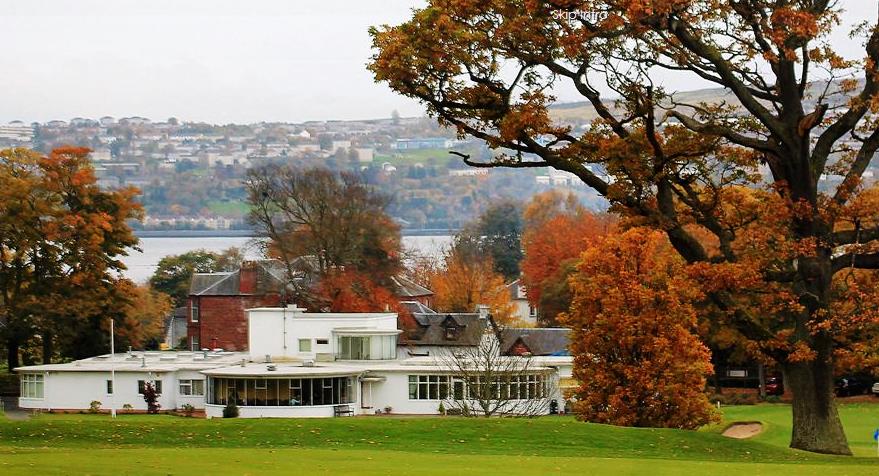
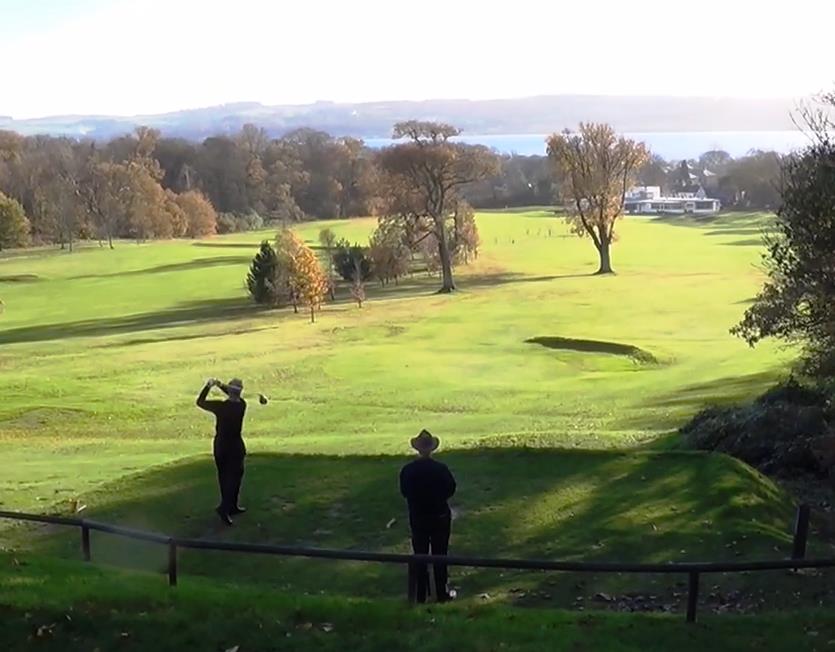
Club History
The club was founded in 1895. The club web site www.cardross.com is packed with information and has a very detailed and interesting account of the history of the club including details of the damage that was done to the clubhouse and course by bombing during the second world war.
Course Details
Once again, the club web site has very detailed descriptions of the layout of the course and of each hole and so these are simply my observations made from the viewpoint of a high handicapper that even Robert's efforts have failed to improve.
The only holes visible from the clubhouse and the main road are the 1st and 18th which you can see in the photo to the left. This was taken from the 18th tee looking back to the clubhouse with the 1st fairway making its way up from the clubhouse.
The 18th is a fine closing hole with out of bounds down the right and a big old tree right in the middle of the fairway making for an interesting drive.
The 1st hole is a tough opener. Although it is stroke index 6, the scoring statistics on the web site indicate that only the 10th is more difficult to make par on. The main feature of the hole are the two fairway bunkers known as The Spectacles which you can just see as a dark ridge blocking the first fairway in the picture. These, combined with the uphill nature of the hole mean that reaching the green in two is quite a challenge.
Once you complete the first hole, the course disappears behind the trees and you can leave any troubles that you might have had on the first tee behind you as you immerse yourself in the quiet solitude of the countryside. The second has a tree-lined fairway and a decent drive leaves you with a downhill approach shot to the green which is just behind the trees in the photo on the right.
The third is a short par four. Tall trees push in from either side of the tee and the fairway slopes steeply from left to right.
The fourth is a longer par four with a burn running across the fairway at a distance that requires most people to lay up short of the burn, giving a longish approach shot to the green.
The third and fourth sit on ground bought from The Chrystal Trust in 1978 as described in the very interesting history section on the club web site and form a little out and in that bring you back to the fifth tee that you can see in the picture on the right. The fifth is stroke index 18 but it is one of the most interesting holes on the course as the picture shows.
The tee shot is played over a burn between tall trees to to a small elevated green with a bunker in front, so concentration and nerve are called for. The green forms one continuous green with the second to lend even more interest to the hole.

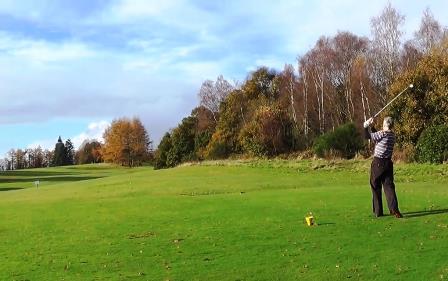
The sixth is an uphill, blind shot aided by a marker post and followed by another uphill shot to an elevated green. You are then rewarded for your efforts by a tee shot with a view over the Clyde on the seventh.
The eighth winds its way back up the hill to another elevated green which has out of bounds at the back so don't be too energetic with your approach shot.
The ninth tee shown in the photo on the left takes you out to one of the extremities of the course. The ninth is a straightforward par 4 which is pretty much as you see it in the photo, with a sloping green sitting in a semi-circle of trees.
The tenth is a long par 4 that turns back into the course and is a hole that rewards the big hitter. A dip followed by a ridge with a marker pole confronts you on the tee and if you can clear the ridge with some run on the ball it will carry a long way down towards the hole - otherwise you have two shots to the green.
At this point on the course you cross a public track that runs through the course into a separate area with three holes on it. The first of these is a par 4, the main feature of which is a large tree right in the middle of the fairway. Most people can drive beyond this tree which makes the approach shot relatively straightforward - I'm still hoping.
The twelfth, shown in the picture to the right, is another favourite hole (I like par 3's) down in a corner of the course with the public footpath running behind the tee. It is about 150 yards to the green which is comprehensively guarded by bunkers.
The next hole is a par 5. The tee shot is played towards a marker on the hill and the approach to the green is downhill. At this point you cross back into the main course to face a tee shot on the 14th which has yet another tree in the middle of the fairway to contend with. The shot to the green is a long one for most and the green is elevated with steep slopes.
The fifteenth is another testing par 3 with out of bounds down the right before you reach one of the most interesting holes on the course. The sixteenth is a right angled dog leg with trees in the corner of the dog leg which big hitters can cut over. Otherwise you play up to the corner and take two shots to the green - that's the theory anyway.
The seventeenth is a short uphill par 4 but the elevated green, protected by bunkers all round makes for a testing approach shot. A short walk through some trees brings you to the eighteenth tee with its wonderfull views back down to the clubhouse and over the Clyde.
I hope that this a reasonable description of what is a favourite course for me and one that I am sure you cannot fail to enjoy playing.
The short video below attempts to give you a bit of a feel for the course.
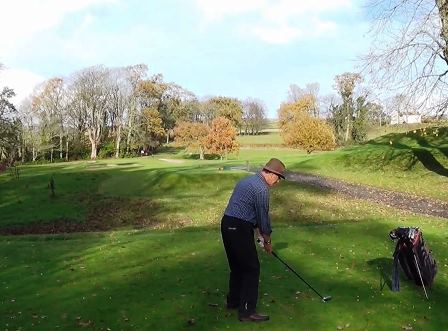
ronnie@outandaboutinscotland.co.uk